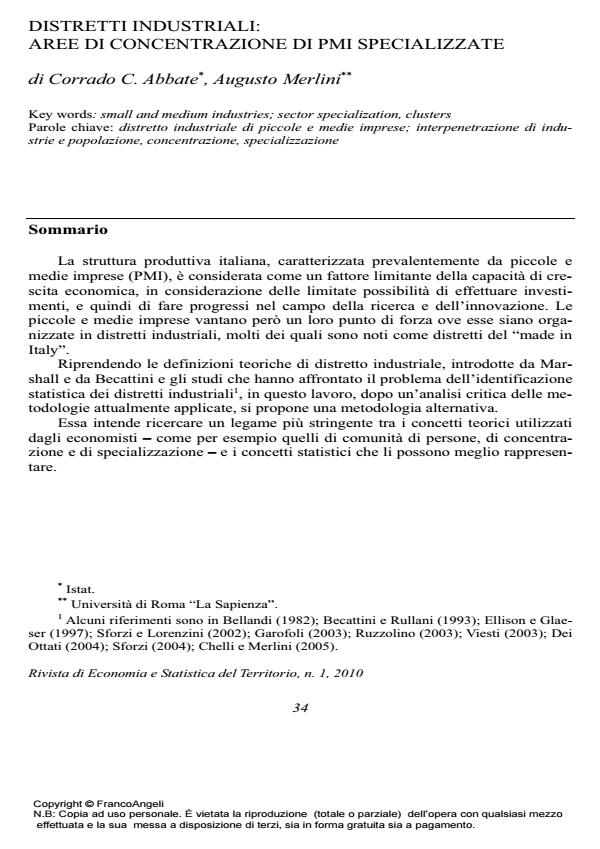Distretti industriali: aree di concentrazione di PMI specializzate
Journal title RIVISTA DI ECONOMIA E STATISTICA DEL TERRITORIO
Author/s Corrado C. Abbate, Augusto Merlini
Publishing Year 2010 Issue 2010/1
Language Italian Pages 70 P. 34-103 File size 706 KB
DOI 10.3280/REST2010-001003
DOI is like a bar code for intellectual property: to have more infomation
click here
Below, you can see the article first page
If you want to buy this article in PDF format, you can do it, following the instructions to buy download credits

FrancoAngeli is member of Publishers International Linking Association, Inc (PILA), a not-for-profit association which run the CrossRef service enabling links to and from online scholarly content.
Specialized Small and Medium Industries in a Territory Objectives The agglomeration of small firms into industrial districts could be a real strength of the economic system. Many of these are known as "made in Italy" districts. Coming from Marshall and Becattini definitions, we analyzed alternative methodologies and we proposed an original procedure to identify them. Methods and Results The terms used by the economists, like community of persons, concentration and specialization, have been statistically shown by industrial contiguity indicators, Poisson-Gamma distribution of absolute contingence, and maximum classification codes of economic activity. Three type of industrial districts: bigger, medium, and smaller, have been identified. Specialized workers, in a lot of industries within a close territory, work in the same activity or in more activity connected. Conclusions The industrial districts identified here are those well known in the textile, shoes, glass, and other economic sectors. Some of these are not identified by other methodologies. Smaller districts have been identified also in the South of Italy.
Jel codes: L11, L22
Corrado C. Abbate, Augusto Merlini, Distretti industriali: aree di concentrazione di PMI specializzate in "RIVISTA DI ECONOMIA E STATISTICA DEL TERRITORIO" 1/2010, pp 34-103, DOI: 10.3280/REST2010-001003